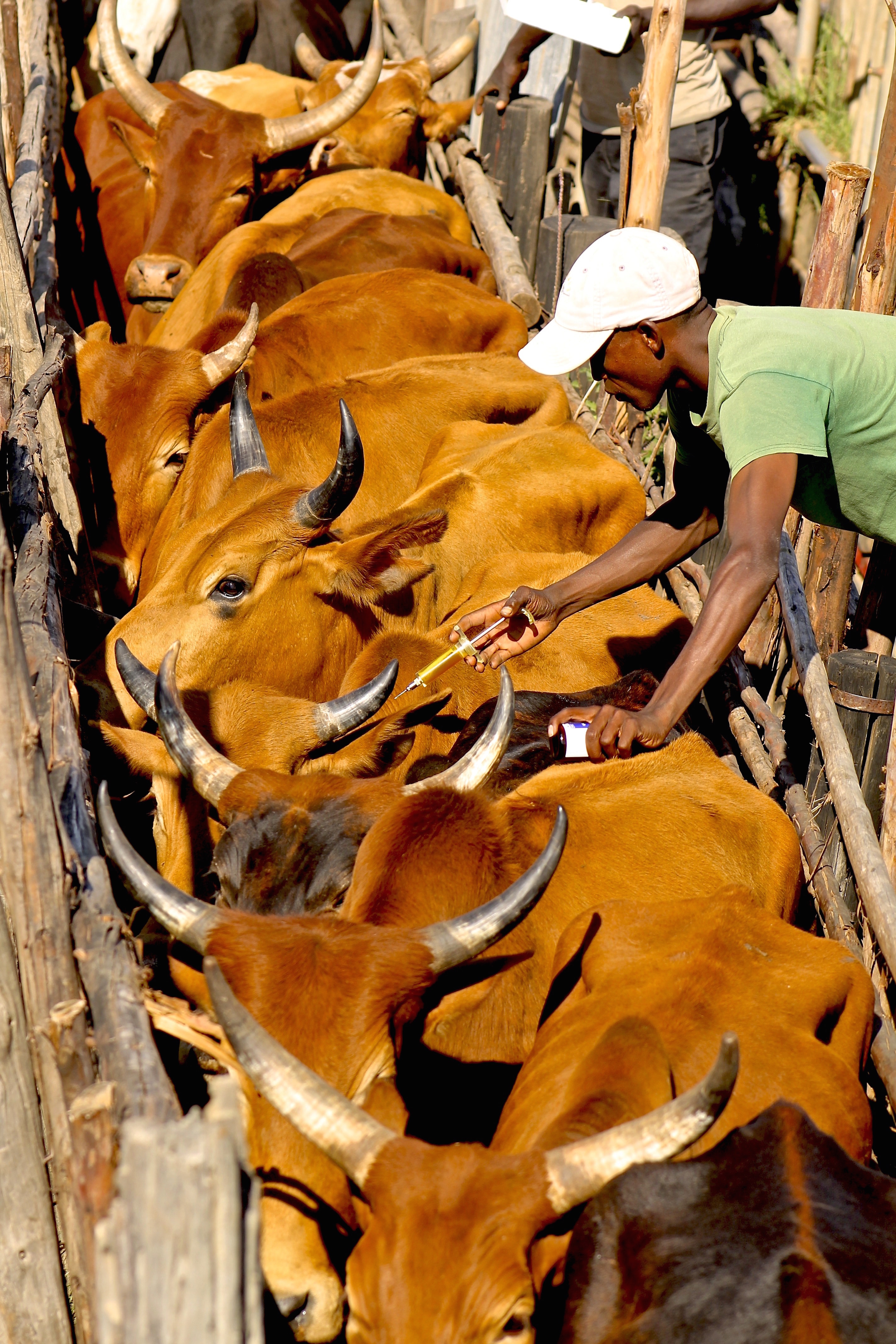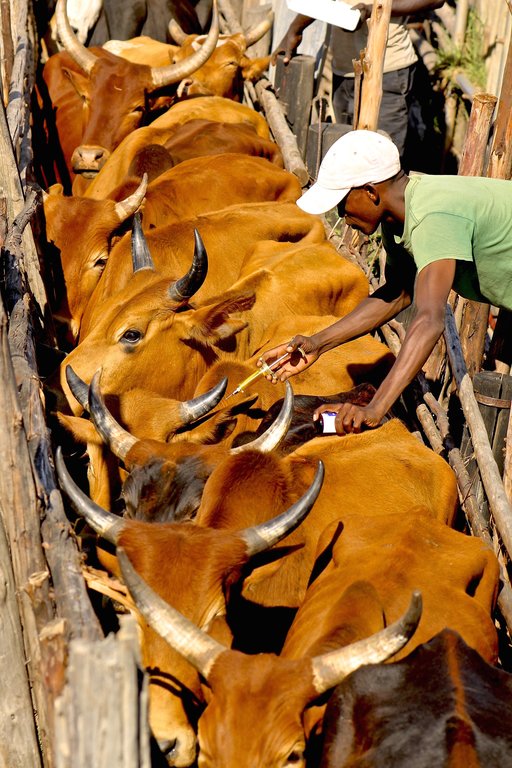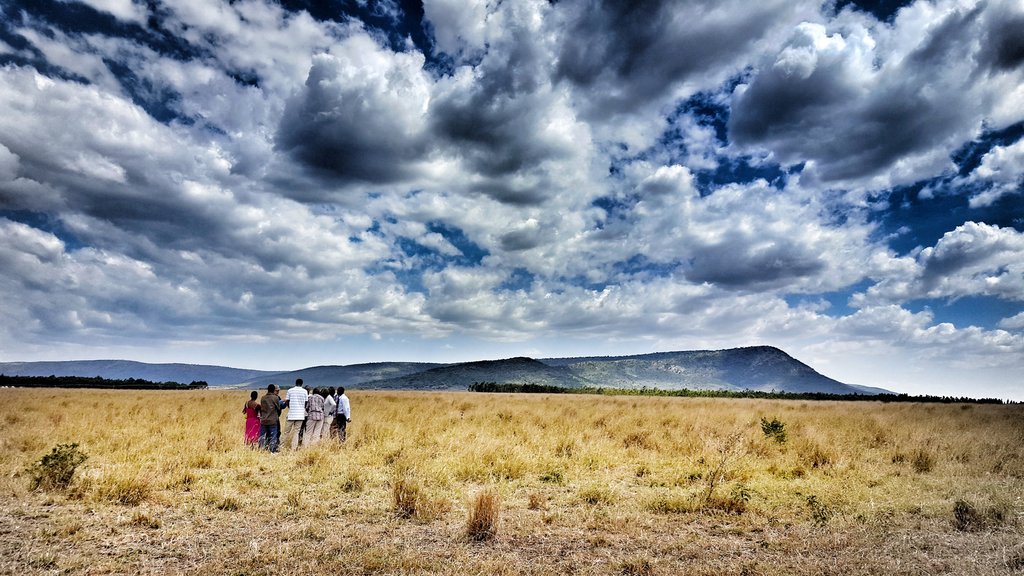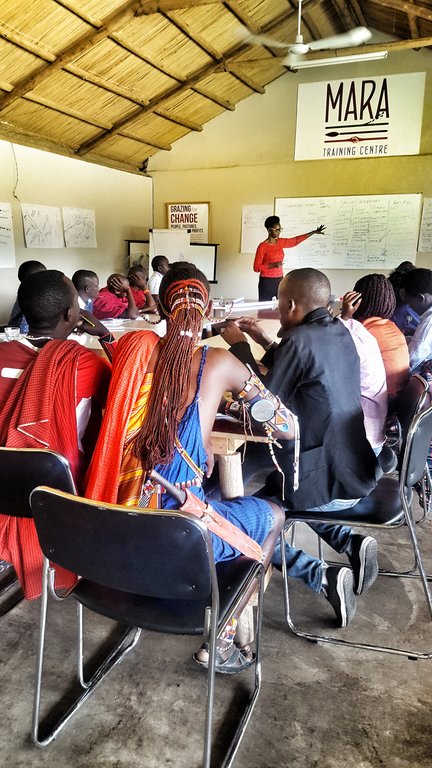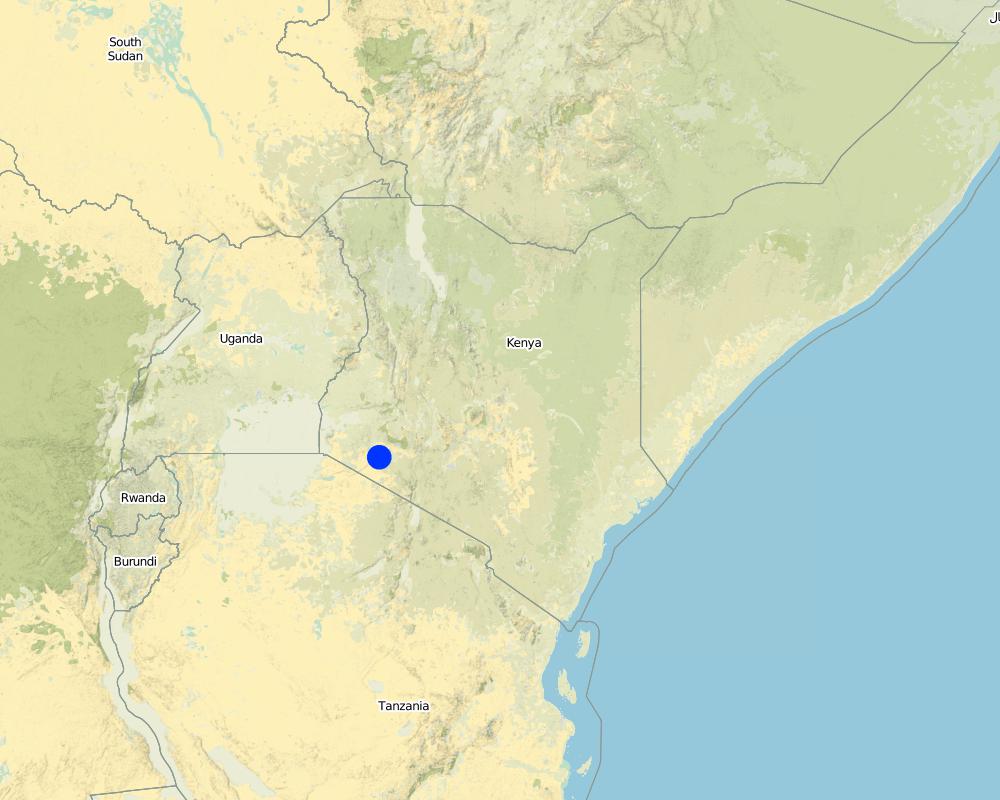Mara Beef: value added beef for for improved rangeland management, livelihoods, and conservation. [Kenya]
- Creation:
- Update:
- Compiler: Peter Tyrrell
- Editor: Alex Freeland
- Reviewers: Donia Mühlematter, Rima Mekdaschi Studer, Hanspeter Liniger
approaches_3425 - Kenya
- Full summary as PDF
- Full summary as PDF for print
- Full summary in the browser
- Full summary (unformatted)
- Mara Beef: value added beef for for improved rangeland management, livelihoods, and conservation. : March 30, 2018 (inactive)
- Mara Beef: value added beef for for improved rangeland management, livelihoods, and conservation. : April 28, 2018 (inactive)
- Mara Beef: value added beef for for improved rangeland management, livelihoods, and conservation.: Aug. 10, 2018 (inactive)
- Mara Beef: value added beef for for improved rangeland management, livelihoods, and conservation.: Sept. 3, 2018 (public)
View sections
Expand all Collapse all1. General information
1.2 Contact details of resource persons and institutions involved in the assessment and documentation of the Approach
{'additional_translations': {}, 'value': 50, 'label': 'Name of project which facilitated the documentation/ evaluation of the Approach (if relevant)', 'text': 'Book project: Guidelines to Rangeland Management in Sub-Saharan Africa (Rangeland Management)', 'template': 'raw'}1.3 Conditions regarding the use of data documented through WOCAT
When were the data compiled (in the field)?
28/02/2018
The compiler and key resource person(s) accept the conditions regarding the use of data documented through WOCAT:
Yes
2. Description of the SLM Approach
2.1 Short description of the Approach
Mara Beef provides a new direct to market sales approach for pastoralist's in Kenya, in an effort to make livestock production more viable to local landowners. This livestock production model is combined with rangeland management and training in an effort to improve pastoral livlihoods, restore rangelands and prevent degradation, and support biodiversity conservation.
2.2 Detailed description of the Approach
Detailed description of the Approach:
Mara Beef is a limited company that raises top quality beef on the edge of the Maasai Mara, Kenya. The Mara Beef company uses their own private land - Naretoi farm - as well as partnering with the Enonkishu Conservancy, to introduce high quality beef breeds to local herds, and sell the beef onto high end supermarkets and restaurants through their own abattoir. There is a large gap in the prime beef market in Kenya, and Mara Beef is trying to fill this gap. Other cuts, not prime cuts, are sold to other less expensive restaurants. The beef is slaughtered and butchered on site. Mara Beef is engaged in many facets of improved rangeland management; the management of Enonkishu Conservancy and Naretoi farms; through the Mara Training Centre, a training hub for rangeland management; and using the Mara Beef network to link pastoral communities with higher value market.
The Enokishu Conservancy is a conservancy created on the edge of the Maasai Mara ecosystem, and is registered under the Maasai Mara Wildlife Conservancies association. The conservancy is 6,000 acres in size, and is owned by 34 landowners who are Maasai pastoralists. Mara Beef has worked with the conservancy to develop a grazing plan for the conservancy. This plan encourages seasonal rotational grazing that allows grasslands to be heavily grazed for short periods, and allowed to recover over long periods. Conflict between predators and cattle is minimised through the use of mobile bomas (enclousers), to protect cattle at night. Integrating wildlife and livestock management into this conservancy aims to i) provide financial benefits through livestock sales from community cattle to build resilience to stochastic events, such as droughts; ii) to increase food security through supplementary income generation; iii) establish sustainable livestock production, to reduce rangeland degradation in an effort to restore and protect ecosystem functioning. This includes the improvement of soils, watershed protection, carbon sequestration and biodiversity conservation. The conservancy pays each land owner to use the land for cattle fattening, and the average land rent paid to each landowner per year is $20 per acre, spending roughly $119,680 per year. Community members also receive conservancy fees from tourists visiting the area.
The Mara Training Centre was established within the Enonkishu training centre to work with communities to help them create and manage the future they desire. The programs build on three principles: building social participation, governance and participation; creating locally implemented and led planned grazing; and stimulating growth in livestock and wildlife based enterprises. The centre runs a variety of training courses including: boot-camps on rangeland management; extension services; and ecological monitoring.
Finally Mara Beef also provides market linkages for the broader pastoral community to premium beef markets. This service lets pastoral communities from across the region to sell beef at a guaranteed price based on both weight and grade at the animals. This price is often significantly higher, on average around $50, than any price offered by local markets, and the lower transport costs and less weight loss on transport also benefit the seller. The emphasis on high quality beef, with high weight requirements, should have a broader affect on pastoral communities, encouraging improved rangeland management for improved livestock productivity. Although this process will be slow. Mara Beef, for example, was granted a loan from the Agricultural Finance Corporation in January 2017 to purchase malnourished cattle during the drought - where Mara Beef bought 1000 animals from105 individuals at an average of $250 per cow.
2.3 Photos of the Approach
2.4 Videos of the Approach
Comments, short description:
https://www.youtube.com/watch?v=kY_SEDjFDkA
2.5 Country/ region/ locations where the Approach has been applied
Country:
Kenya
Region/ State/ Province:
Narok
Further specification of location:
Maasai Mara
Map
×2.6 Dates of initiation and termination of the Approach
Indicate year of initiation:
2013
If precise year is not known, indicate approximate date when the Approach was initiated:
less than 10 years ago (recently)
2.7 Type of Approach
- recent local initiative/ innovative
2.8 Main aims/ objectives of the Approach
- Establish sustainable livestock production and premium market for pastoralists
- Improve grazing management systems through implementation and training
- Conserve and restore biodiversity through an integrate wildlife-livestock approach
2.9 Conditions enabling or hindering implementation of the Technology/ Technologies applied under the Approach
social/ cultural/ religious norms and values
- enabling
Cultural and traditional ecological knowledge complements the teaching of the Mara Training Centre and the holistic management of Enonkishu conservancy.
availability/ access to financial resources and services
- enabling
Provision of a grant (and loan) through the African Enterprise Challange Fund allowed for the improvement of the slaughter house ; livestock purchases from community members; the establishment of Enonkishu conservaiton area; and the building of the Mara Training Centre
Support has also been provided by WWF to help establish the conservation area.
institutional setting
- enabling
Enonkishu is a community onwned conservancy which operates as a legal entity and acts as the interaction point between Mara Beef and the local community.
legal framework (land tenure, land and water use rights)
- enabling
Enonkishu conservancy has formed under the provisions of the Wildlife Act 2013 to form a conservancy, bringing together private landowners.
knowledge about SLM, access to technical support
- enabling
The creation of the Mara Training Centre acts as a hub of knowledge for information sharing and technical support in rangeland management, offering courses and extension services to communities. This is supported by the Kenya Wildlife Conservancies Association and the Savory Institute.
markets (to purchase inputs, sell products) and prices
- enabling
The creation of the Mara Beef premium market ensures that pastoralists receive improved prices on their livestock compared to normal markets.
3. Participation and roles of stakeholders involved
3.1 Stakeholders involved in the Approach and their roles
- local land users/ local communities
33 landowning families established the Enonkishu Conservancy
They are the landowners and receive benefits from land rents provided by the conservancy. They receive benefits from sale of Enonkishu cattle to Mara Beef, receiving financial returns on the investment. They also receive benefits of conservancy fees from visiting tourists.
- SLM specialists/ agricultural advisers
Savory Insitute
Act as advisers for the Mara Training Centre programs.
- NGO
Maasai Mara Wildlife Conservancies Association
Acts as the umbrella body for wildlife conservancies in the region, including Enonkishu. They are also responsible for encouraging sustainable rangeland management practices and livestock production within the Mara conservancies.
- international organization
African Enterprise Challange Fund (AECF)
Provided funding for the establishment of the conservancy; construction of the mara training centre; and the improvement of the slaughterhouse.
3.2 Involvement of local land users/ local communities in the different phases of the Approach
| Involvement of local land users/ local communities | Specify who was involved and describe activities | |
|---|---|---|
| initiation/ motivation | interactive | Mara Beef began the process of developing Enonkishu conservancy with the local community members, and found funding and technical capacity to develop the project. |
| planning | passive | The fundraising and planning of the Mara Beef business model, the Mara Training Centre, and Enonkishu was largely supported by members external to the local Maasai community. |
| implementation | external support | Enonkishu conservancy has a manager supported by Mara Beef that controls grazing management across the conservation area. Mara Beef is owned an operated by non community members. Mara Training Centre involves local communities in the development of the training curriculum - to incorporate traditional knowledge - and during teaching of courses. |
| monitoring/ evaluation | passive | Monitoring and evaluation of grazing management, beef prices and community benefits is conducted by Mara Beef staff. |
3.4 Decision-making on the selection of SLM Technology/ Technologies
Specify who decided on the selection of the Technology/ Technologies to be implemented:
- mainly SLM specialists, following consultation with land users
Explain:
The farm manager has a long history of working with rangeland management. They consulted with specialists from the region to help advise on the best way to manage grazing on Enonkishu, as well as including community dialogue on best practice.
Mara Beef was set up with advise from business experts to build a sustainable and profitable beef business.
The Mara Training Centre was developed in consultation with landowners and with experts from the fields of conservation and rangeland management.
Specify on what basis decisions were made:
- evaluation of well-documented SLM knowledge (evidence-based decision-making)
- personal experience and opinions (undocumented)
4. Technical support, capacity building, and knowledge management
4.1 Capacity building/ training
Was training provided to land users/ other stakeholders?
Yes
Specify who was trained:
- land users
- field staff/ advisers
Form of training:
- on-the-job
- farmer-to-farmer
- demonstration areas
- public meetings
Comments:
In 2015, 40 members of the Enonkishu Conservancy community, went on a training trip to Ol Maisor, Sosian, NRT, LEWA, Il Ngwesi and Westgate Conservancy, to learn about community conservation and rangeland management.
Training is provided on a continual basis to both local landowners and pastoralists from across the region through the Mara Training Centre. In the first 6 months of operation, over 600 people attended training courses.
4.2 Advisory service
Do land users have access to an advisory service?
Yes
Specify whether advisory service is provided:
- on land users' fields
- at permanent centres
Describe/ comments:
Mara Training Centre provides advise and courses both at the training centre, located in the Mara, and through outreach programs to pastoralists across the region.
4.3 Institution strengthening (organizational development)
Have institutions been established or strengthened through the Approach?
- yes, greatly
Specify the level(s) at which institutions have been strengthened or established:
- local
Describe institution, roles and responsibilities, members, etc.
The Enoonkishu conservancy was established with 50 landowners to protect and manage their land in a more sustainable and profitable way.
Specify type of support:
- financial
- capacity building/ training
Give further details:
Support was provided by several conservation NGOs, including the African Conservation Centre and WWF to support the initial costs of motorbikes and wildlife rangers within the Enonkishu conservation area. Further funding from African Enterpise Challange Fund was used to pay lease fees to the Enonkishu community and further equip the wildlife rangers and managers.
4.4 Monitoring and evaluation
Is monitoring and evaluation part of the Approach?
Yes
Comments:
Mara Beef monitors its purchase and sales records, as well as purchase weight and sale weight .
Enonkishu monitors its rangeland health using (?)
If yes, is this documentation intended to be used for monitoring and evaluation?
No
4.5 Research
Was research part of the Approach?
No
5. Financing and external material support
5.1 Annual budget for the SLM component of the Approach
If precise annual budget is not known, indicate range:
- > 1,000,000
Comments (e.g. main sources of funding/ major donors):
The initial budget for this project was large (>$500,000). This large amount of funding was needed to establish Enonkishu conservation area through payment of land rent, the purchasing of equipment for the Mara Beef slaughterhouse and distribution network, and the construction of the Mara Training Centre.
The company has a large turnover each year, purchasing over $850,000 of cattle in 2017.
5.2 Financial/ material support provided to land users
Did land users receive financial/ material support for implementing the Technology/ Technologies?
Yes
If yes, specify type(s) of support, conditions, and provider(s):
Landowners of Enonkishu conservancy are provided with land rent, roughly $3,390 per landowner per year.
5.3 Subsidies for specific inputs (including labour)
- infrastructure
| Specify which inputs were subsidised | To which extent | Specify subsidies |
|---|---|---|
| Slaughter house improvement | fully financed | Grant from AECF |
- other
| Other (specify) | To which extent | Specify subsidies |
|---|---|---|
| Mara Training Centre | fully financed | Grant from AECF |
Comments:
The Enonkishu conservancy land rent was also paid by an AECF grant for the first two years of establishment.
5.4 Credit
Was credit provided under the Approach for SLM activities?
No
5.5 Other incentives or instruments
Were other incentives or instruments used to promote implementation of SLM Technologies?
No
6. Impact analysis and concluding statements
6.1 Impacts of the Approach
Did the Approach empower local land users, improve stakeholder participation?
- No
- Yes, little
- Yes, moderately
- Yes, greatly
The approach established the Enonkishu conservancy, providing them with a platform for better land management, conservation and revenue generation.
Did the Approach help land users to implement and maintain SLM Technologies?
- No
- Yes, little
- Yes, moderately
- Yes, greatly
The approach provides training and outreach through the Mara Training Centre
Did the Approach mobilize/ improve access to financial resources for SLM implementation?
- No
- Yes, little
- Yes, moderately
- Yes, greatly
The approach improved access for funding to the Enonkishu conservation area.
Did the Approach improve knowledge and capacities of land users to implement SLM?
- No
- Yes, little
- Yes, moderately
- Yes, greatly
Over 600 pastoralists trained in rangeland management and livestock production in the first 6 months of the establishment of the Mara Training Centre.
Did the Approach improve knowledge and capacities of other stakeholders?
- No
- Yes, little
- Yes, moderately
- Yes, greatly
Mara Beef organised a conference in Nariobi, called Grazing for Change, with other 300 delegates debating the role of livestock production in conservation and development.
Did the Approach build/ strengthen institutions, collaboration between stakeholders?
- No
- Yes, little
- Yes, moderately
- Yes, greatly
The approach established the Enonkishu conservancy, and its links with Mara Beef.
Did the Approach empower socially and economically disadvantaged groups?
- No
- Yes, little
- Yes, moderately
- Yes, greatly
In 2017 Mara Beef provided an estimated benefit of $103,600 to livestock owners (estimated at at a $50 increase in value per cattle sold to Mara Beef as opposed to other markets). In 2017 Mara Beef also bought cattle from an Agricultural Finance Corporation drought contingency fund. Mara Beef bought 1000 animals off 105 farmers at an average of $250 each cow. These cattle would have certainly died due to lack of food. Therefore, a net Benefit of $ 250 per (cow) multiplied by 1000 cows spread over 105 farmers. So, a net benefit of $250,000 divided by 105 farmers. $2380 for 105 farmers
The approach allows pastoralists to sell directly to market, rather than losing value through several steps of brokers before it reaches a point of sale in Nairobi.
6.2 Main motivation of land users to implement SLM
- increased production
In Enonkishu conservancy the improved grazing and livestock management increase the income each individual households,
- increased profit(ability), improved cost-benefit-ratio
For pasotralists that sell to Mara Beef they gain as much as $50 per cow sale , due to lower transport costs, less weight loss, and a slighter higher price of purchase paid by Mara Beef (5%)
- reduced land degradation
Improved grazing management in Enonkishu will reduce land degredation.
The training of pastorlaists from across the country should have an impact of reduced rangeland degradation across the country.
- payments/ subsidies
Land rent payment for each member of Enonkishu conservancy. Roughly $85,000 per year to all members.
- enhanced SLM knowledge and skills
The development of the Mara Training Centre creates a hub of knowledge, courses, and extension services for rangeland managers.
6.3 Sustainability of Approach activities
Can the land users sustain what has been implemented through the Approach (without external support)?
- uncertain
If no or uncertain, specify and comment:
The Mara Beef model is supported by large captial investment and is not landowner run.
The Enonkishu conservancy is heading towards creating a self sustaining model of operations, without external support.
6.4 Strengths/ advantages of the Approach
| Strengths/ advantages/ opportunities in the land user’s view |
|---|
| Provision of knowledge on improved livestock production and rangeland managment |
| Provision of an improved market for cattle |
| Strengths/ advantages/ opportunities in the compiler’s or other key resource person’s view |
|---|
| Creation of a production oriented approach provides the potential for improved rangeland management across the region. With pastoralists beginning to produce fewer, higher quality cattle for sale, through efforts to improve grazing management across the region. |
| This approach has a huge potential to be up-scaled to support community conservation through a sustainable and well managed livestock production and rangeland management model. |
| Mara Beef has also been a key catalyst of conversation across SSA relating to sustainable rangeland management, livestock production, and mixed livestock-wildlife ecosytems. |
6.5 Weaknesses/ disadvantages of the Approach and ways of overcoming them
| Weaknesses/ disadvantages/ risks in the land user’s view | How can they be overcome? |
|---|---|
| Lack of ability to practice individual herding within the conservation area | Use of tradtional Maasai community structures to enforece grazing rules |
| Weaknesses/ disadvantages/ risks in the compiler’s or other key resource person’s view | How can they be overcome? |
|---|---|
| The focus on cattle present a great opportunity, but sheep and goats also need a better, readily available market to increase off-take. | Building of a pack-house in Nairobi for goat meat for the export market, to compete with other markets. |
| Lack of impact on improved rangeland management beyond the Enonkishu area, especially when livestock is purchased from all over the country. There is also a lack of high quality cattle. | Establish links with other conservancies and landowner groups to encourage improved grazing management, producing higher quality cows. |
7. References and links
7.1 Methods/ sources of information
- field visits, field surveys
- interviews with land users
- compilation from reports and other existing documentation
Links and modules
Expand all Collapse allLinks
No links
Modules
No modules


